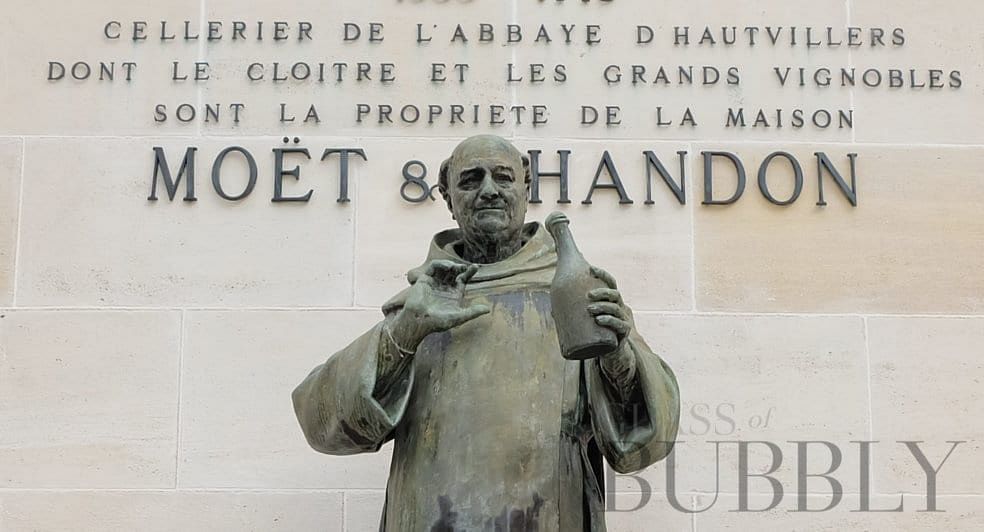
It looks almost a too simple question, an open door: Does Champagne sparkle? But if we look at it more deeply we might come to surprising insights. Going back to the word ‘sparkle’ we can retrace it to the Old English 16th century word ‘spearca’ which meant ‘throw off glowing or fiery particles’. This concept was of course related to the glints we see when looking at a fire in the dark. An observation which goes back far before the serendipitous accident which had lead to ‘le vin du diable’: the wine of which the bottles exploded unexpectedly due to the second fermentation resulting from temperature change. But the bottles of this ‘Devil’s wine’ which survived this unintended second fermentation process, turned out to become surprisingly popular. Champagne, as we still know it, was born.
Come quickly!
I am tasting the stars!
I have finally bottled
The beauty and wonder
Of kissing that Champagne smile
Come quickly!
I am tasting the stars!
I have finally captured
The beauty of your Champagne skin
Come quickly!
I am tasting the stars!
Those Champagne eyes, your smile so bright
I have always wondered where the sun goes at night
Come quickly!
I have bottled the stars!
The sun and stars belong to you
Your Champagne skin and Champagne smile
Your Champagne eyes and your Champagne hair
Come quickly!
I am tasting the stars!
I have bottled all the stars for you
On this very fine Champagne night.
(Dom Pérignon)

When looking at our glass of Champagne we see, like twinkling stars in the open air, lots of small bubbles everywhere. But these bubbles are just only activated as the wine is uncorked. There’s no fizzy action until the cap is opened. And when opened, suddenly, the bottle as well as our glasses, get filled with multiple tiny air pockets. But what had effectively happened? Where do the bubbles come from? It looks like out of nothing. But that’s of course an illusion. The phenomena started due to the combination of high gas pressure in the bottle and a relative low temperature of the wine. This caused the carbon dioxide, which resulted from the second fermentation, to dissolve in water, creating carbonic acid. When the temperature is raised or the pressure is reduced – by uncorking the bottle – the carbon acid molecules convert again into carbon dioxide clusters which escapes from the wine in the form of bubbles.
Pour the Champagne and let its mousse rise,
like thousands of sparkling smiling eyes.
(Jared M. Brown)

So the sparkles of a fire are the fiery physical particles which are ultimately converted into the light which is emitted and the resulting ash. The sparkles in the Champagne on the other hand are just carbon dioxide clusters which merged into the air at the surface of wine. But where we can see the emitting light of the burning particles in the fireplace, we can’t see the carbon dioxide as it is transparent. So what is then the sparkling that we see in Champagne? What we see is just the glittering of light against the edge of the Champagne. We don’t see the bubble, but only that what’s around the transparent space. So where we SEE the light emitted by a fierce particle, wo don’t SEE the bubble, but only a reflection of what’s around it. Hence the sparkles of the fire do exist in themselves, but the sparkles in the Champagne don’t exist in themselves. They are just an illusion!
A bubble is ‘nothing’ with an edge around it.

But when drinking Champagne we definitely feel the sparkling in our mouth. So how is that possible? Something which doesn’t exist, only as an illusion, creates a tingling feeling? The point is, as with a lot of things in life, that it’s about the art of omission. It’s for a great deal the omission in the Champagne which creates the tantalizing experience when drinking Champagne. It’s comparable with the work of a sculptor. He sees through the rock the sculpture which is hidden within. The only thing to do is to take away the concealing parts ….. then the sculpture can come to it’s fullest expression! When the bubbles enter our mouth, it is these empty spaces which create the pleasant tingling and cooling sensation with every sip. As such the bubbles are a crucial dimension of the ‘sculpture’ we call Champagne.
Good vibes!
Corné van Nijhuis
World’s first self-declared Vinosopher
Leave a Reply